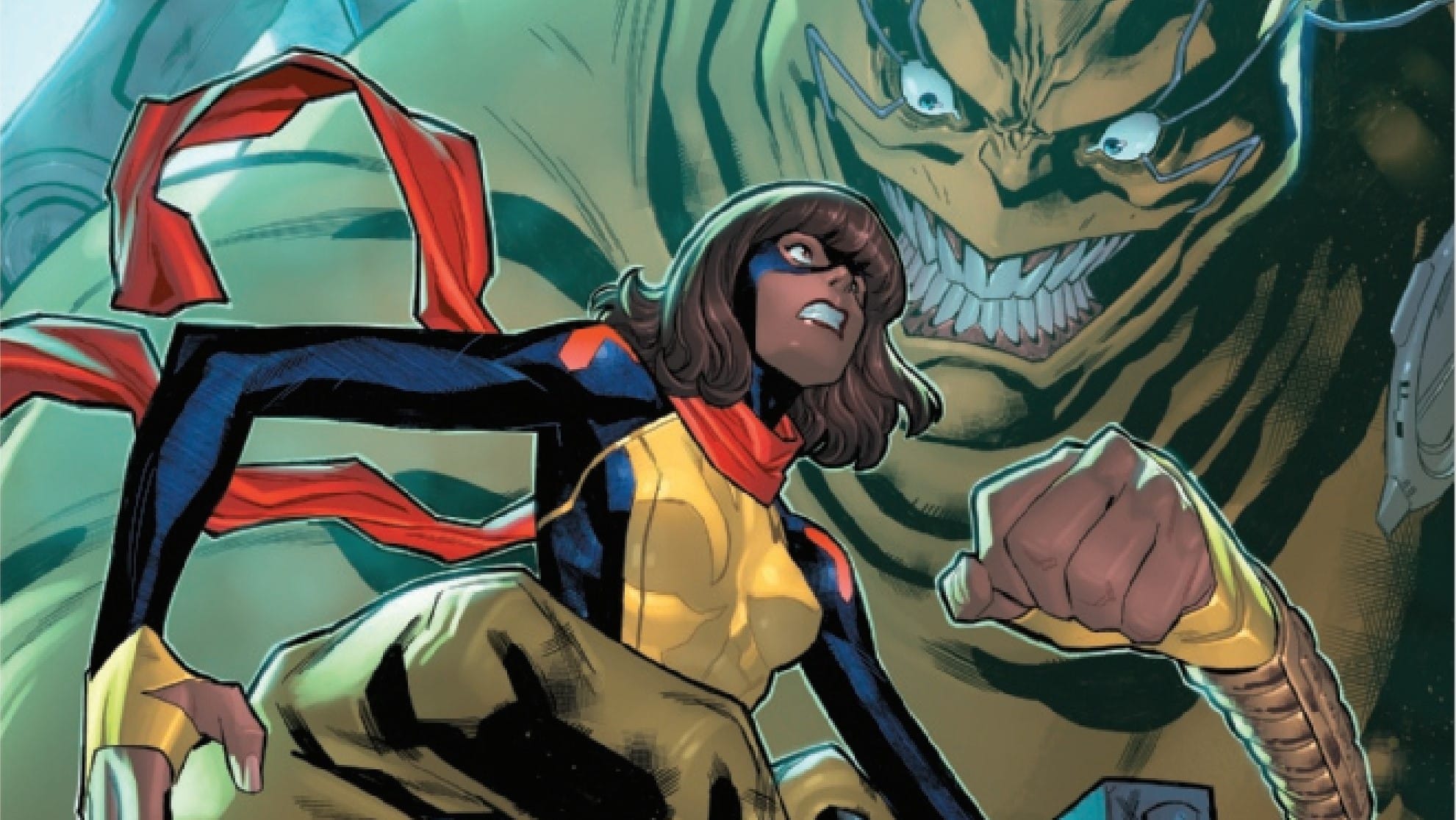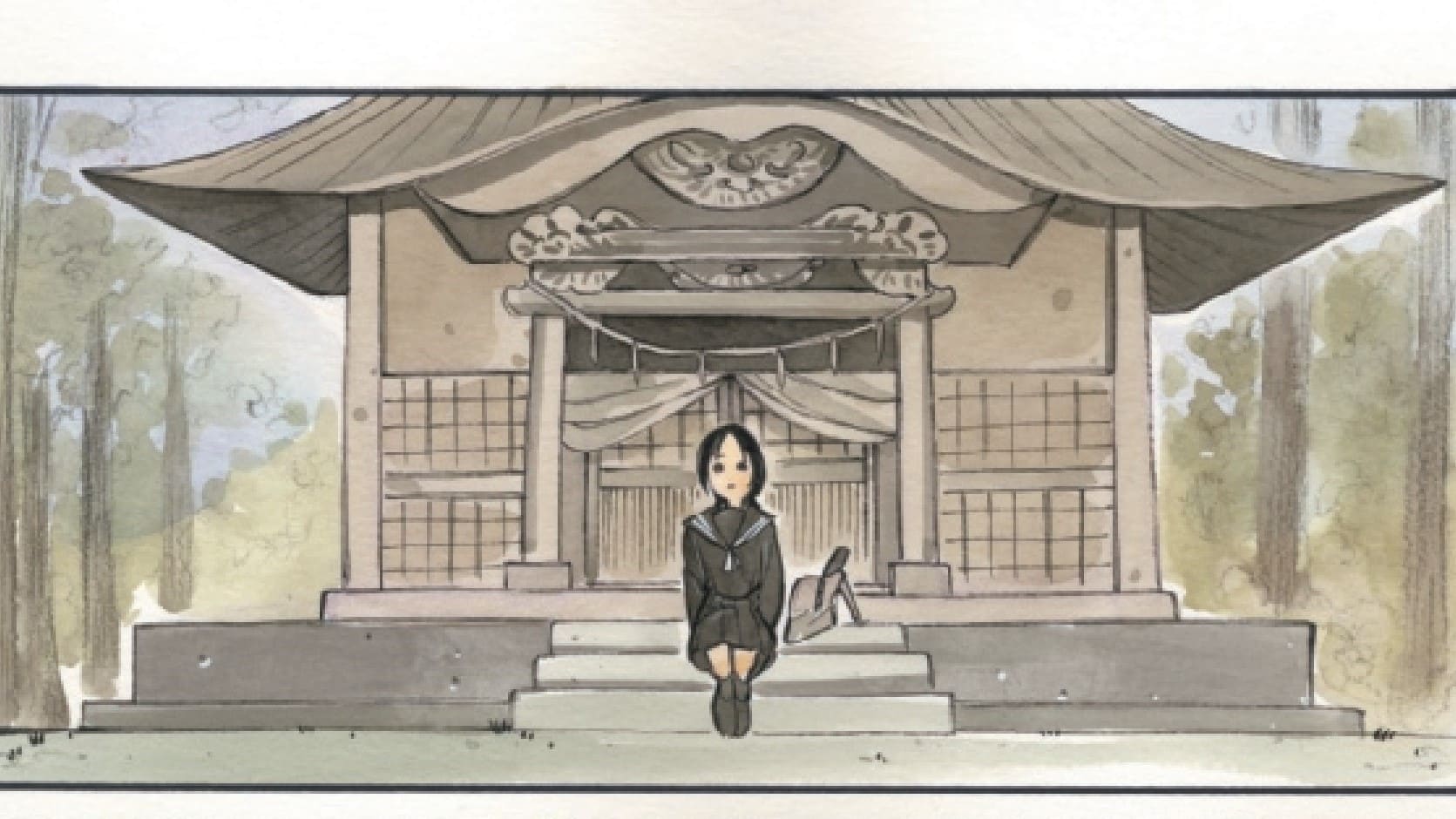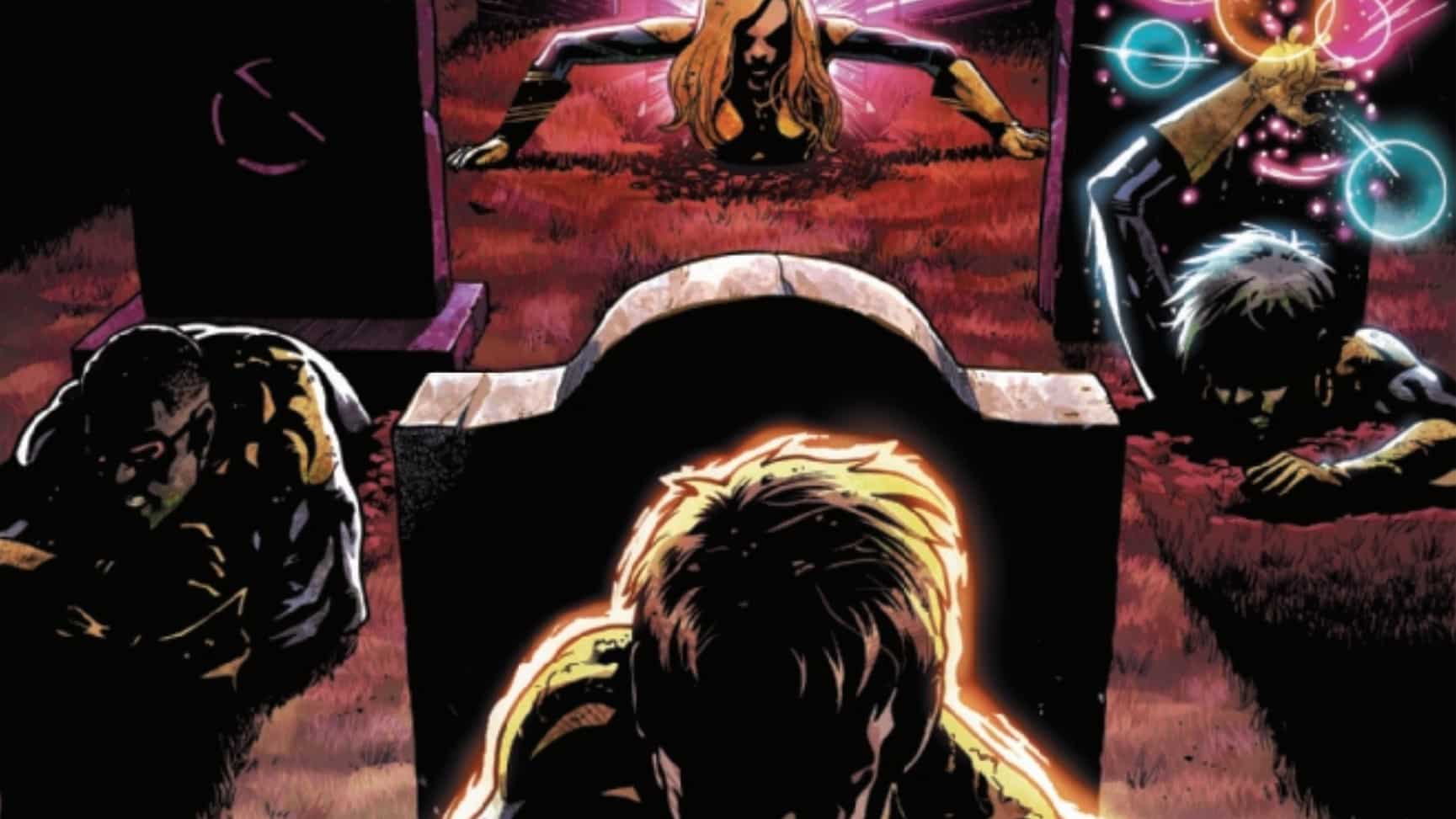Gambit and his new ex-marine pal Marissa must rescue young Ororo, along with Marissa’s mom, from a classic hostage situation in a property baron’s mansion on the mighty Mississippi! Plus: snappy answers to costuming questions in Gambit #3, written by Papa Chris Claremont, art by Sid Kotian, colors by Espen Grundetjern, letters by VC’s Clayton Cowles.
Deja Vu
Were you looking for something new in the X-milieu, chére? Gambit #3 ain’t it. Remy LeBeau has stories to tell of his time with the de-aged Ororo, stories that take place between the panels of Uncanny X-Men #267, just as the Magik mini-series took place between the panels of Uncanny X-Men #160, but that mini-series defined a character and (don’t ask me how I know) saved lives. This one, so far, fills in a couple of blanks and has fun with a surprisingly by-the-numbers Bronze Age-style heroic adventure. It’s the kind of comic where you know what’s going to happen pages before it happens, and for a Claremont joint it is surprisingly self-contained. Gambit #1 promised much more; Gambit #4 could still deliver!
That said, mes amis, Chris Claremont knows what he’s doing. And what he does here is, mostly, letting Gambit show Marisa how to suit up and behave like a superhero, how to draw fire in fights, how to work alongside a super-partner, and — therefore — how to save her mom and his ward. Once that happens, they break in and fight the super-strong guy from last issue, his name now given as Warhawk (last issue never named him). Remy and Marissa then require help from young Storm and her guardian on the ancestral plane: the day gets saved when, and only when, ‘Ro learns how to call down lightning, apparently for the first time.
Haute Couture
The training sequence, if that’s what you want to call it, might be the best part of Gambit #3, not just because it looks like fun but because Gambit answers decades-old questions about hero costumes. Par exemples, chers lecteurs: does Gambit’s costume fit a woman of rounded bosom, notable hips, taut muscles, and Remy’s own height? Bien sûr! The bust will apparently expand to match Marissa’s, or maybe anyone’s, measurements, while the head buttress can stretch or contract for the weather’s head size. Marissa looks great in Gambit’s magenta-and-blue costume-armor. She looks like it’s been designed for her. Do all hero costumes do that?
Of course they do: unstable molecules, maybe. Why are heroes like Gambit so little afraid of gunplay? Do conventional bullets bounce off Gambit’s armor? Sorta: it’s body armor, including the head buttresses, and it’s better at stopping a bullet than at blunting a big strong punch. If it’s for combat, why does the costume– unlike real-life military body armor– boast such standout colors? Gambit does some ‘splainin’ in that department too: “Bright colors on the torso make for an irresistible target.. which gives me– ‘n now you– the chance to get close enough t’ clobber the rascals… or duck away t’ cover.”
Specifics: Gambit, in sneaky dark clothes plus his trenchcoat, gonna go into dat mansion and rescue de kids while Marissa, in Gambit’s costume-armor draws fire. General: superheroes wear bright costumes because they want villains to focus on them and attack them, because they can take it: that’s one way to protect civilians.
Turns out Marissa’s got a taste for dat superhero life. With the suit on, “she begins to feel what it must be like… to be Hawkeye or the Black Widow.” (Let’s hope that’s Hawkeye as in Kate Bishop: no one deserves to feel the way Clint feels half the time. But I digress.)
Artist Sid Kotian has fun, and shares the fun, in drawing the punches and kicks and such, and then in the exploding playing-card tosses — courtesy our favorite red-eyed Cajun — that constitute the end of the fight scene. He’s also having what looks like fun in laying out many pages with a vertical division, one long panel on the left and several smaller panels on the right that take place after the one on the left, as if to remind us that young Storm is taking inspiration from above.
Gambit #3 feels like the creators are having fun with the materials Claremont and his collaborators have strewn about the storerooms and closets of Marvel in his several decades there. Better yet, it feels like the characters are having fun, even when they’re throwing punches, maybe especially when they’re throwing punches. The best thing about a Gambit story may be his long-running, now stable romance with Rogue, but when there’s no Rogue in the picture the best thing may be his communicable joie de vivre. And he does communicate that in Gambit #3: to Marissa, and to the readers who follow him up the stairs of the bad guy’s mansion and down into the pit where the staff flies and punches get thrown.
“Sacré Bleu!”
You know who’s fun to fight, but not fun to watch? Warhawk (not to be confused with Warlock, Warhammer or Warpath). Blue strong dude’s a generic villain in a costume whose only distinguishing mark is a pair of crossed hammers, or axes: he looks Kree, which is likely an accident, and boring, which can’t be intended. Surely the Sid Kotian who snazzed up Marissa that way could do better if he made a baddie from scratch?
Surely he could: chers lecteurs, beaucoup d’excuses, but in our coverage of Gambit #2 I failed to recognize that classic 1970s Marvel villain Warhawk, first seen in Marvel Premiere #23 by Claremont, with pencils by Pat Broderick and inks by future New Mutants co-creator Bob McLeod. (In our defense, I think he was never named in that issue.) Claremont’s going to the very back of his closet for this one, and I am hoping we get more, and more interesting, callbacks from his time on Iron Fist. (Or maybe on Ms. Marvel?)
While those folks fight in full color, real estate baron Solarz menaces, and almost shoots, the hostage. Fortunately for Storm’s heroic career, those hostages have been learning in black and white how to save themselves, through magic and through lightning and through a literal storm with a face on it, a face looking down through the clouds. It’s “your moment of choice. And truth.”
So the goddess says to the young mutant, and she chooses Claremontian prose: “And though she feels as if she’s in a dream, actions become reality. She hears thunder as the lightning erupts from her hands.” It’s a moment of self-claiming, and a moment when she claims the heroic life, almost as Marissa has done, and with far more consequences for Marvel stories to come.”
Do I love it? I love it. I also love the colors here: gray and white, blue and magenta, rainy indigo, and then finally golds and yellows, reserved for the moment when ‘Ro’s powers come to life. And I dig the Claremontian body modification signature, this time (I think) free of cultural appropriation: when you’ve been through a supernatural conflict in a Claremont book, something mysteriously changes your body. In this case the grandmother gets “eye markings,” like giant fake eyelashes. “Weird thing is, I like ‘em.”
I like ‘em too. I’m left with more questions: Does Marissa get to keep Gambit’s armor forever? Where did ‘Ro get her oversized M (for MTV, perhaps) T-shirt? And where did VC’s Clayton Cowles learn his literally letter-perfect impression of Tom Orzechowski? Are they, too, connected on the ancestral plane?
I’m pretty sure we’re headed to New Orleans as this series makes its way down the Mighty Mississippi, the Mother of Waters, the great seam of the American continent, the Cajun and Creole country’s raison d’etre — I’ll stop now before I turn purple myself. I ain’t so sure about next issue’s big bad, an interplanetary bounty hunter called (wait for it) Bounty, first seen in (mais bien sûr) Claremont and Salvador Larocca’s late-1990s Fantastic Four. I’m sticking with this series for now, but hoping for more surprises next time. Or at least another quick costume change.
Stephanie Burt is Professor of English at Harvard. Her podcast about superhero role playing games is Team-Up Moves, with Fiona Hopkins; her latest book of poems is We Are Mermaids. Her nose still hurts from that thing with the gate.






